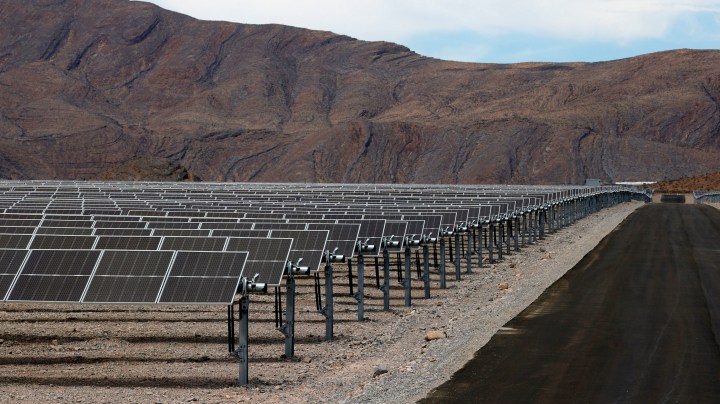
Clean energy would create trillion-dollar market and millions of jobs, IEA says
Clean energy would create trillion-dollar market and millions of jobs, IEA says

The goals the U.S. and other countries have set to cut greenhouse gas emissions over the next decade are only about 20% of what’s needed to limit global warming to 1.5 or 2 degrees Celsius, according to a new report from the International Energy Agency.
Countries need to invest a lot more in clean energy, per the IEA. The organization estimates that investment in clean energy could reap economic benefits, including some 13 million new jobs and a trillion-dollar clean energy market that would rival the size of the oil market currently.
To get these kinds of numbers, researchers often start with demand.
“So we demand electricity, we demand fuels for our cars,” said Melissa Lott, a research director at the Center on Global Energy Policy at Columbia University, adding that there’s a lot of data about all that demand.
“What the models do is they say, how much are we going to demand in the future? And then how do we supply that demand … in the net-zero/zero-carbon world?” Lott said.
For example: How many cars would need to be electric? How many wind and solar farms would need to be built?
“They can then try to figure out, you know, how many solar panels is that? Therefore, how many manufacturing jobs is that?” said Amy Myers Jaffe, who runs the Climate Policy Lab at Tufts University’s Fletcher School.
Just as there is a lot of data about the demand for electricity, Jaffe said, there’s also plenty about how many people work in the energy industry now.
“People who work with the ships, people who work with the drilling, and then we also know how many people it takes to install solar farms and to manufacture batteries,” she said.
Put all that together and researchers can reasonably extrapolate how many jobs might be created by transitioning to more renewable energy, Jaffe added. And how much money there is to be made from building — and using — all that new infrastructure.
“These kinds of estimates are helpful,” said Richard Newell, president of the nonprofit Resources for the Future. “They both express the substantial magnitude of the opportunity, and they also express the scale of the challenge. And those are, I would say, kind of two flip sides of the same coin.”
Both sides, he said, are important for governments, businesses and society to see.
There’s a lot happening in the world. Through it all, Marketplace is here for you.
You rely on Marketplace to break down the world’s events and tell you how it affects you in a fact-based, approachable way. We rely on your financial support to keep making that possible.
Your donation today powers the independent journalism that you rely on. For just $5/month, you can help sustain Marketplace so we can keep reporting on the things that matter to you.


















